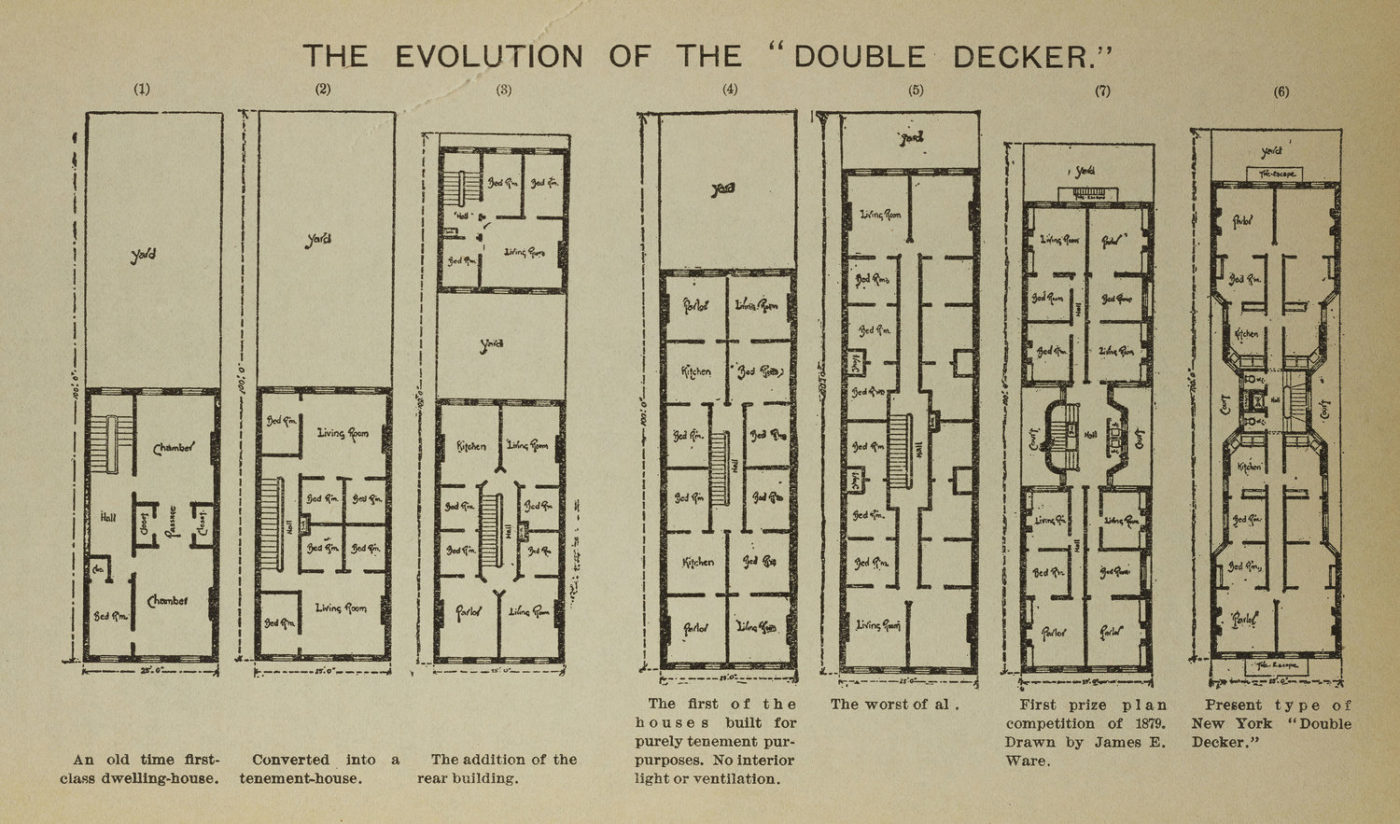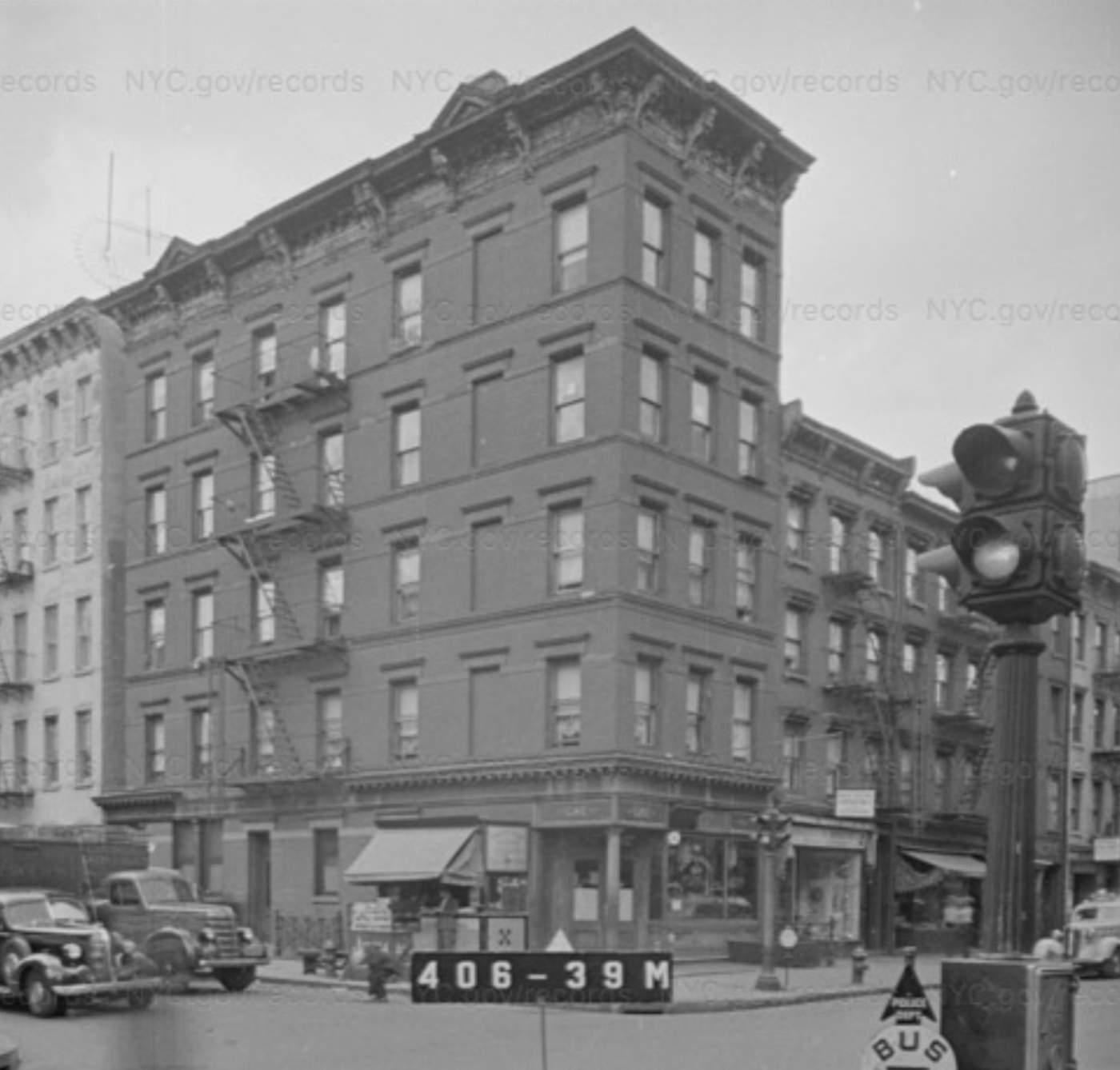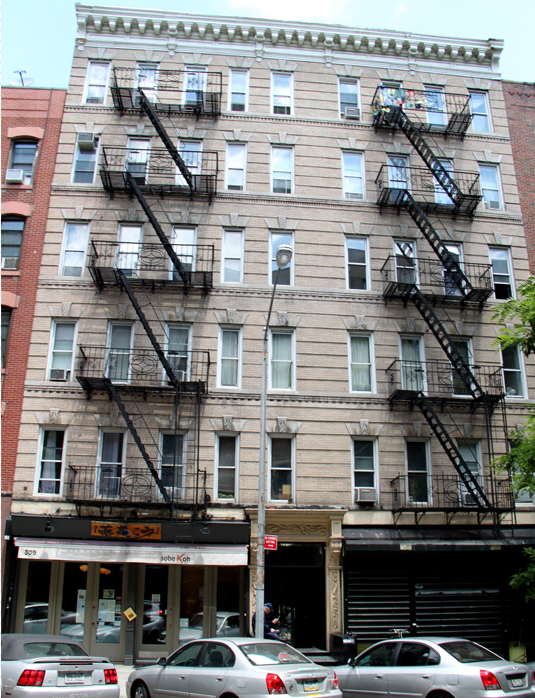The Evolution of Tenement Typologies in the East Village
The East Village is one of New York City’s most historically dynamic neighborhoods, as evidenced by its rich and diverse built environment. The neighborhood displays excellent examples of so many types of dense urban housing present in New York City, from single-family rowhouses to tenements of the “pre,” “old,” and “new” law typologies, to public housing and apartment buildings. The East Village is a particularly rich area to study the development of the tenement typology and how it manifested throughout New York City.
New York City’s Commissioners’ Plan of 1811 broke the city down into 25-foot by 100-foot land parcels as they were considered suitable for private, single-family houses. However, New York City’s population exploded in the 19th century from just under 100,000 in 1811 to 800,000 by 1860. Famine in Ireland and revolution in Germany throughout the 1840s were major catalysts for massive immigration to New York City. This rendered the single-family home an improbable solution to housing the city’s expanding population. By the 1830s, many single-family rowhouses and other structures, such as warehouses and stables, were subdivided and retrofitted into multi-family housing or “tenementized.”

The evolution of tenement design, from Pre-Law to Old Law to New Law, from the Tenement House Commission Report of 1895. NYC Municipal Library.


PRE-LAW 1820-1879
New York City tenements are typically divided into three categories: “pre-law,” “old law,” and “new law.” The first purpose-built pre-law tenements were built in the 1830s on the narrow rowhouse lots drawn by the city in 1811. There were no laws regulating the design and construction of tenement housing. Pre-law tenements sometimes filled the entire lot, were built to up to 5 stories, had windows only at the front and back of the lot, sometimes creating a dark, poorly ventilated interior, and did not have indoor plumbing or gaslight. By 1864, 500,000 of 800,000 New Yorkers, the vast majority of the city’s inhabitants, lived in these buildings.



551 East 12th Street was built in 1848 for owner John R. Roberts. Various records indicate that the building was originally four stories in height, but by 1911, a fifth story had been added. This building is typical of pre-law tenements as it is situated on an extremely narrow lot and makes use of every inch of land save for a few feet for what was likely a “privy yard”. The building’s plain red brick facade accented by sandstone trim is typical of pre-law tenements. The building’s ornate bracketed cornice, added in the early 20th century, is indicative of the stylistic standards for new law tenements built after 1901.
OLD LAW 1879-1901
The Tenement House Act of 1879 was based in part on a design submitted by the architect James E. Ware to a model tenement competition sponsored by the magazine Plumber and Sanitary Engineer in 1878. Ware devised a plan involving shallow side indentations in buildings to produce “air shafts.” These miniature courtyards were intended to get sunlight and air into the windowless interior rooms of a building. The indents of the air shafts caused the buildings’ footprints to look like dumbbells when viewed from above. By 1901, this building type was deemed “one of the worst forms of housing ever employed” as the air shaft solution created more problems than it solved.
156, 158, and 160 First Avenue



Originally built in 1898, these six-story brick dumbbell tenement buildings at 156, 158, and 160 First Avenue were designed by architect George Frederick Pelham for owner Tobias Krakouer. All three buildings share an identical facade featuring a bracketed cornice with decorative frieze, round-arched window openings with brick lintels and key stones at third and sixth stories, slightly projecting brick piers through fifth and sixth stories, ornamented panels, elaborate bracketed window lintels with molding or triangular pediments at second and fourth stories, beltcourses. There are metal pilasters with attached columns flanking the main entry, capped by a molded entablature.
NEW LAW 1901-1927
The Tenement House Committee was formed in 1898 to investigate the living conditions in tenements and sought to educate the public about the terrible conditions in these buildings. This committee fought hard for changes in building codes. In 1899, the city proposed a new building code, and a state commission drafted the new Tenement House Act. The act was passed on April 12, 1901. It outlawed the dumbbell shape and set a minimum lot size requirement for the building. It also required running water, lighting, ventilation, and indoor bathrooms. This act became a model for housing regulation across the United States. The New Law changed the face of the streetscape with several unintended consequences. It required that each building have a large courtyard for garbage storage and removal. The yard had to be so large that single-lot property owners generally couldn’t build multi-family housing unless they happen to occupy a corner lot which allowed them to satisfy light and air requirements with the public street.



This nine-bay wide, six-story tenement with stores was built in 1907 for owner Hyman Levin by architect Chas M. Straub. There have been no significant alterations on the facade, which features a molded bracketed cornice, beltcourses, and splayed window lintels with keystones. The main entrance has elaborate enframement with flanking carved pilasters, a door hood, and frieze. This building was designed in accordance with the City-Beautiful ethos, drawing heavily on the influence of Beaux-Arts and Renaissance Revival architecture.
Our neighborhoods are rich with fascinating examples of tenement architecture. Read more about tenements in the East Village here and the South Village here.

very informative! I am leading a photo walking tour and this is helpful information. Thanks